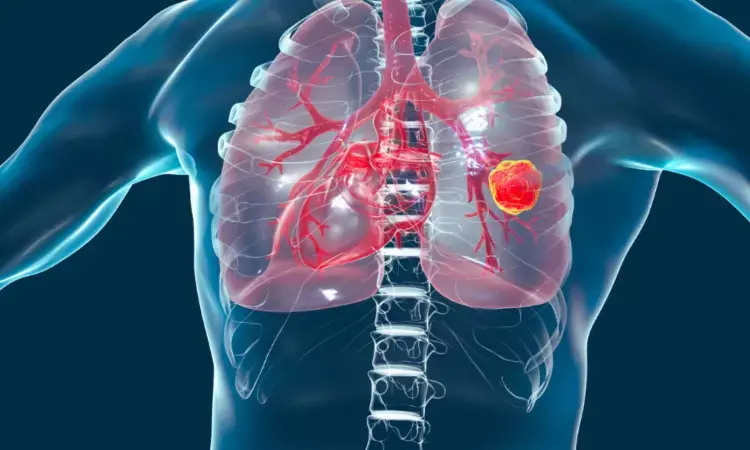- Home
- Medical news & Guidelines
- Anesthesiology
- Cardiology and CTVS
- Critical Care
- Dentistry
- Dermatology
- Diabetes and Endocrinology
- ENT
- Gastroenterology
- Medicine
- Nephrology
- Neurology
- Obstretics-Gynaecology
- Oncology
- Ophthalmology
- Orthopaedics
- Pediatrics-Neonatology
- Psychiatry
- Pulmonology
- Radiology
- Surgery
- Urology
- Laboratory Medicine
- Diet
- Nursing
- Paramedical
- Physiotherapy
- Health news
- Fact Check
- Bone Health Fact Check
- Brain Health Fact Check
- Cancer Related Fact Check
- Child Care Fact Check
- Dental and oral health fact check
- Diabetes and metabolic health fact check
- Diet and Nutrition Fact Check
- Eye and ENT Care Fact Check
- Fitness fact check
- Gut health fact check
- Heart health fact check
- Kidney health fact check
- Medical education fact check
- Men's health fact check
- Respiratory fact check
- Skin and hair care fact check
- Vaccine and Immunization fact check
- Women's health fact check
- AYUSH
- State News
- Andaman and Nicobar Islands
- Andhra Pradesh
- Arunachal Pradesh
- Assam
- Bihar
- Chandigarh
- Chattisgarh
- Dadra and Nagar Haveli
- Daman and Diu
- Delhi
- Goa
- Gujarat
- Haryana
- Himachal Pradesh
- Jammu & Kashmir
- Jharkhand
- Karnataka
- Kerala
- Ladakh
- Lakshadweep
- Madhya Pradesh
- Maharashtra
- Manipur
- Meghalaya
- Mizoram
- Nagaland
- Odisha
- Puducherry
- Punjab
- Rajasthan
- Sikkim
- Tamil Nadu
- Telangana
- Tripura
- Uttar Pradesh
- Uttrakhand
- West Bengal
- Medical Education
- Industry
No Survival Benefit for Minimally Invasive Pneumonectomy Over Open Surgery in Lung Cancer Patients, Study Finds

USA: As thoracic surgery techniques evolve, minimally invasive pneumonectomy (MIP) is increasingly being compared to traditional open pneumonectomy (OP) for patient outcomes and surgical efficiency. Recent studies have highlighted the potential benefits of MIP, while also identifying key factors that contribute to the need for conversion to open procedures.
A recent study involving 3,784 patients with non-small cell lung cancer who underwent pneumonectomy found no significant survival benefit of minimally invasive techniques over traditional open surgery. The researchers showed comparable 30-day and 90-day mortality rates and median overall survival times for all surgical approaches; indicating that minimally invasive pneumonectomy does not provide a survival benefit over the open surgical method.
The findings were published online in The Annals of Thoracic Surgery on August 8, 2024.
Minimally invasive pneumonectomy, performed through small incisions using video-assisted thoracoscopic surgery (VATS) or robotic assistance, offers several advantages over the conventional open approach. These include reduced postoperative pain, shorter recovery times, and fewer complications such as wound infections and prolonged air leaks. Savan K. Shah, Department of Cardiovascular and Thoracic Surgery, Rush University Medical Center, Chicago, Illinois, USA, and colleagues aimed to determine if MIP for non-small cell lung cancer (NSCLC) provides a survival advantage over open pneumonectomy.
For this purpose, the researchers queried patients who underwent pneumonectomy for NSCLC between 2015 and 2020 from the National Cancer Database. The surgical approaches were classified into robot-assisted (RATS), video-assisted thoracoscopic (VATS), and open pneumonectomy.
Propensity score matching was employed to ensure balanced patient cohorts. Both univariate and multivariate regression analyses were conducted to explore the relationship between surgical approach and 30- and 90-day mortality, while a Cox proportional hazards model was utilized to evaluate overall survival.
The study led to the following findings:
- 3784 patients were identified, including 73% open, 19% VATS, and 8% RATS.
- The overall conversion rate from minimally invasive to open was 29.5%.
- After propensity matching 212 patients per cohort, there were no differences between open, VATS, and RATS 30-day (9.4% versus 8.5% versus 7.5%, respectively) or 90-day mortality (14.2% versus 12.3% versus 10.4%, respectively).
- Median overall survival was similar among open (48 months), VATS (51.0 months), and RATS approaches (50 months).
- On multivariate analysis of the matched cohort, there was no association between approach and overall survival.
- RATS (OR 0.67) and neoadjuvant chemotherapy (OR 0.52) were protective against conversion to open.
"The findings showed that minimally invasive pneumonectomy can achieve short-term and long-term survival rates comparable to those of open pneumonectomy," the researchers concluded.
Reference:
Shah, S. K., Khan, A. A., Basu, S., & Seder, C. W. (2024). Minimally Invasive Pneumonectomy vs Open Pneumonectomy: Outcomes and Predictors of Conversion. The Annals of Thoracic Surgery. https://doi.org/10.1016/j.athoracsur.2024.07.027
Dr Kamal Kant Kohli-MBBS, DTCD- a chest specialist with more than 30 years of practice and a flair for writing clinical articles, Dr Kamal Kant Kohli joined Medical Dialogues as a Chief Editor of Medical News. Besides writing articles, as an editor, he proofreads and verifies all the medical content published on Medical Dialogues including those coming from journals, studies,medical conferences,guidelines etc. Email: drkohli@medicaldialogues.in. Contact no. 011-43720751


